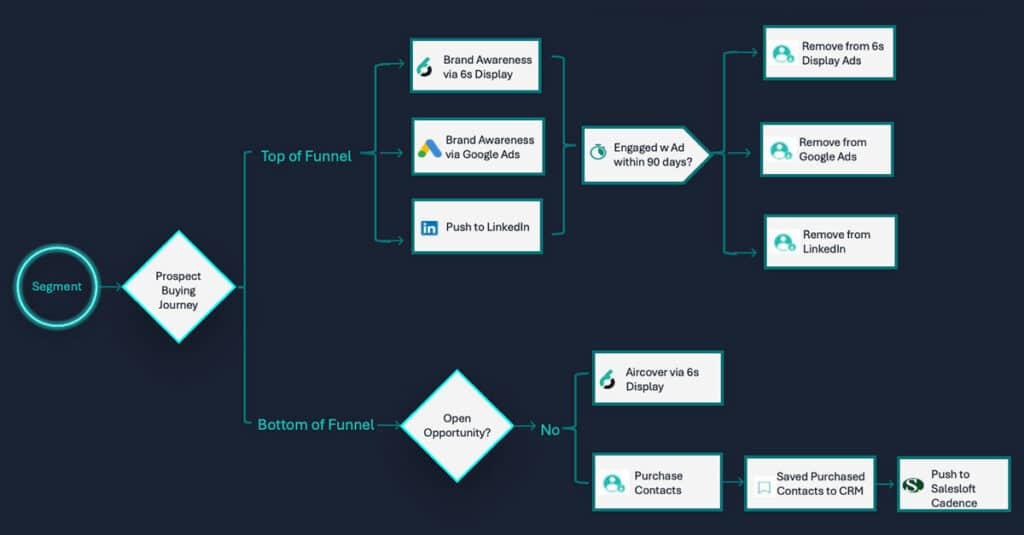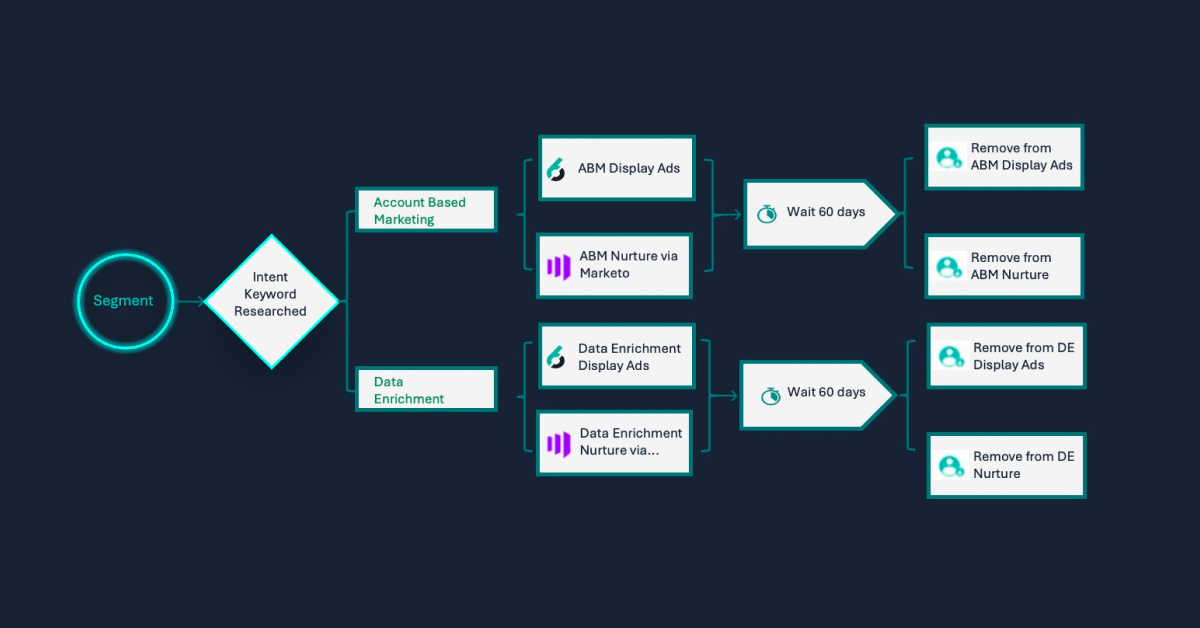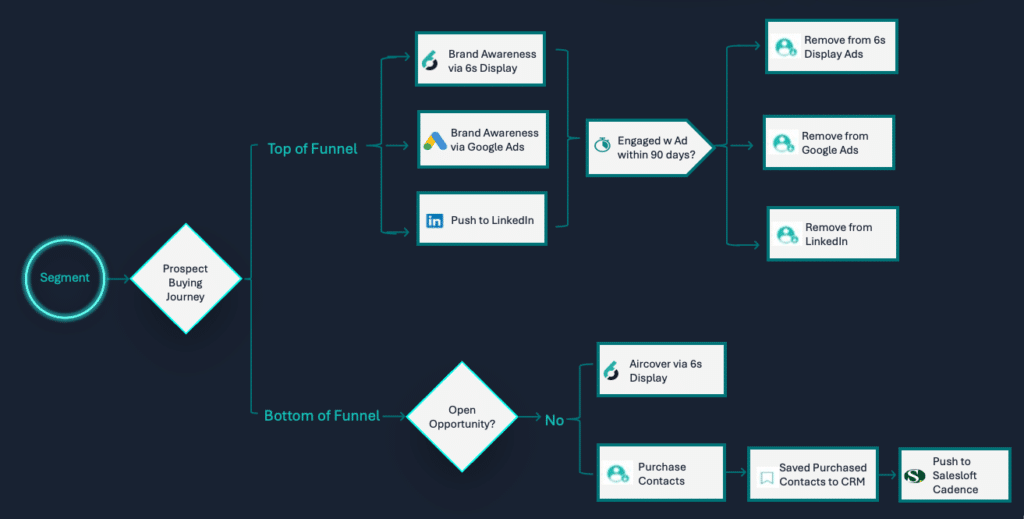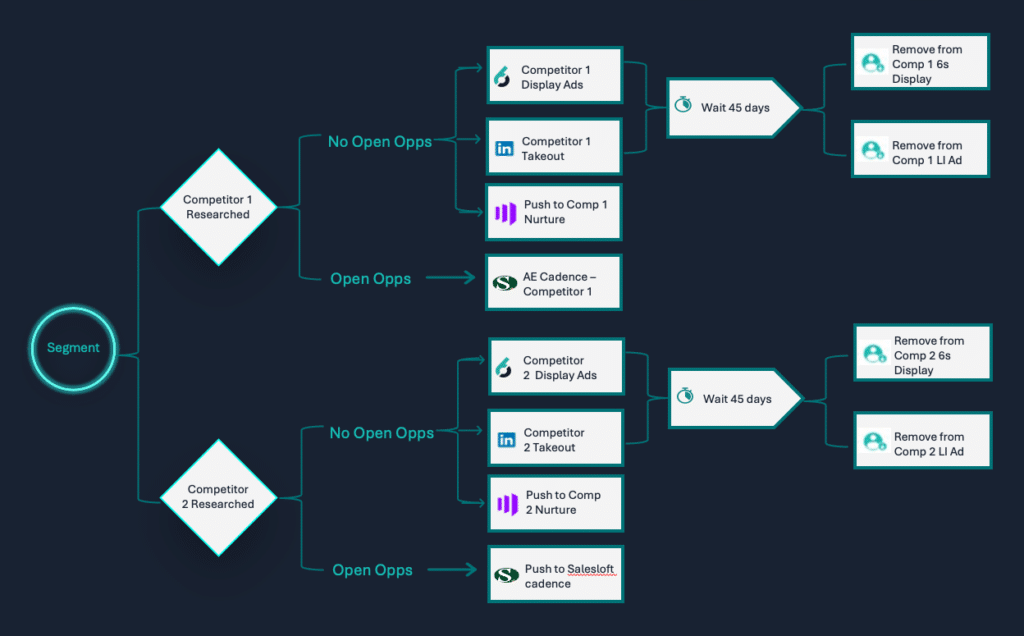6 Plays That Should Be Way Easier: How to Simplify, Streamline, and Start Getting Results


I think all marketers can agree that campaign execution has gotten too complicated.
Even the best GTM teams are juggling a dozen tools and dashboards just to launch a cross-channel play. Add in last-minute changes, shifting priorities, and multiple stakeholders, and it’s no wonder campaigns stall out or underperform.
We built Intelligent Workflows to fix this: to give revenue teams one place to design, launch, and optimize multi-step plays — backed by real-time signals and clear accountability.
It’s been so gratifying to see this vision come to life. Both internally and with our customers, we’re seeing these workflows bring ease and simplicity to a process that was scattered and frustrating until now.
Below are six plays that are live in the wild — driving awareness, pipeline, and alignment across marketing and sales. Plus: the backstory of how we used Intelligent Workflows to launch … Intelligent Workflows. So meta.
1. Omnichannel Awareness Play
Use case: Launching a product, event, or brand campaign
What it does: Activates target accounts across display, social, and email as soon as they show early-stage intent
Try this: Use keyword- or topic-based segmentation to automatically enroll accounts
Why it works: You stay top of mind before a buyer ever fills out a form
2. Full-Funnel Orchestration
Use case: Aligning teams and channels across the buyer journey
What it does: Adjusts messaging, CTAs, and channels automatically based on persona, behavior, and stage
Try this: Combine persona-based segmentation with triggers like pricing page visits
Why it works: Buyers don’t feel “nurtured” — they feel understood
3. Data Hygiene + Enrichment
Use case: Fixing messy data that slows teams down
What it does: Identifies gaps, enriches contacts, and updates records automatically
Try this: Set up a recurring workflow to keep top-tier accounts fresh and complete
Why it works: Clean data powers every other program
4. Interest-Based Personalization
Use case: Serving content that reflects what buyers actually care about
What it does: Segments accounts by interest and triggers outreach or content based on behavior
Try this: Align interest signals like “security” or “platform consolidation” with buying stage
Why it works: You deliver relevance, not noise
5. Always-On Prospecting
Use case: Creating pipeline consistently, not just during campaign pushes
What it does: Surfaces in-market accounts and routes them to reps or automated plays
Try this: Use predictive scoring to focus on high-likelihood accounts
Why it works: Great opportunities don’t wait around
6. Competitive Takeout Campaigns
Use case: Engaging buyers who are actively researching your competitors
What it does: Auto-enrolls those accounts into personalized campaigns across digital and sales channels
Try this: Use custom messaging that highlights your edge or shares win stories
Why it works: You show up before your competitor even knows they’re looking
How We Launched Intelligent Workflows — Using Intelligent Workflows
These plays are just the beginning. Even “dream campaigns” are simplified when you can plan, orchestrate, and execute across channels with one canvas.
In fact, when we launched Intelligent Workflows, we used the product ourselves to plan and execute the launch. We became “User Zero.”
Our goal was to drive registrations and attendance for the product’s virtual launch event. We built a comprehensive workflow that covered different audiences — customers, early-stage prospects, and late-stage prospects — and coordinated every touchpoint across marketing and sales from a single view.
For Customers:
- Awareness: We ran 6sense display ads to build high-level awareness about the new launch.
- Cross-sell: LinkedIn campaigns targeted existing customers with messaging around expansion opportunities.
- AI Email Agents: Automatically invited key contacts to the launch event via personalized emails.
- Follow-up: If someone didn’t register, they were routed to a Salesloft cadence for human follow-up by BDRs, AEs, or CSMs.
For Early-Stage Prospects:
- Awareness-first: We used 6sense display ads to reach accounts showing early signals but not yet deeply engaged.
- Re-engagement: If someone engaged with ads within 60 days, we checked whether they registered. If not, we triggered direct mail — our branded magazine — as a creative follow-up.
For Late-Stage Prospects:
- Precision targeting: In addition to display and LinkedIn, we assessed contact coverage. If we had fewer than six key personas in our CRM, we enriched the account with net-new contacts automatically.
- Layered touches: The rest followed the same registration → nurture → direct mail flow.
This was all run from a single Intelligent Workflow. One setup, one coordinated plan, multiple channels, and multiple outcomes — personalized by stage, audience, and engagement.
It’s how we hit thousands of registrants and drove meaningful pipeline from the launch.
This is the future of campaign orchestration — and there’s no going back.
Final Thought
These plays aren’t hypothetical — they’re live today, driving engagement, conversion, and coordination across go-to-market teams.
If you’re already using Intelligent Workflows, take this list as inspiration for what to try next. If you’re not, start with just one — and see what changes when your systems, teams, and signals actually work together.
Categories
- All Categories
- 20 Maturity Model
- 5 Groundwork Use Case Playbooks
- 7 Transform Use Case Playbooks
- 6 Maximize Use Case Playbooks
- 1 Roadmap
- 1 Crossword
- 734 All Discussions
- 55 Product Updates
- 61 6th Street
- 12 Welcome
- 4 Administrator Certification
- 3 Sales Certification
- 10 Advertising Certification
- 10 Demand Gen Plays
- 21 Reporting HQ
- Business Value Assessment (BVA)
- 38 AI Email
- 3 What is CE
- 8 Getting Started with CE
- 16 Thriving with CE
- 6 Conversation Starters
- 203 Job Board
- 34 General
- 11 Partner Place
- 200 Research Road
- Compensation Calculator
- 79 Sales
- 14 Pipeline Generation Tuesdays
- 20 BDR Block
- 11 SKO Supplies
- 7 Advice
- 2 Assets
- 20 Verticals
- 10 Manufacturing, Logistics & Supply Chain
- 8 Financial Services
- search-results
- 291 Events
- 12 6sense Quarterly Product Update (Recordings)
- 26 Customer Story Hour (Recordings)





